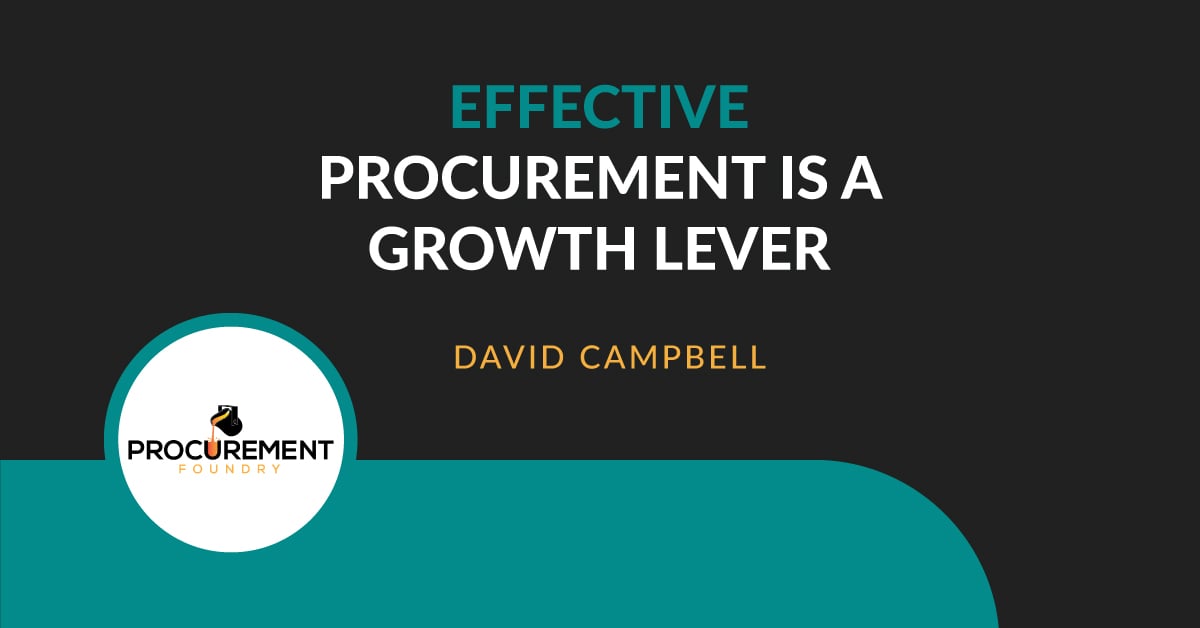Maximizing Savings Opportunities and Procurement's Strategic Value for CPOs
Saving money is not always about pinching pennies: advanced and data-driven insights enable you to identify real cost-saving opportunities, negotiate...

Leaders at fast-growing companies are obsessed with cutting costs and leveraging high ROI opportunities for their businesses. But one area that often flies under the radar is procurement.
In the ultra-competitive startup space, every hour that a company’s stakeholders have to spend sourcing and negotiating tools for their team is one they could’ve spent better focusing on how to turn one dollar into two.
Let’s take a look at the argument for effective procurement as a high-ROI growth lever for growing companies at nearly any stage.
It’s often the case at early-stage startups or companies in high-growth mode that functional contract owners still tackle many of the functions that should otherwise fall under the purview of a procurement team.
This means that, frequently, key decision-makers are bogged down in proposals, renewals, or negotiations —a reality that only introduces drag into a company’s efforts to source SaaS at scale.
While companies invariably fold these functions into a dedicated procurement department at a certain stage, it’s tough to get to every contract at scale. The ability to do so, however, is a meaningful growth lever. Time is money, after all, and every hour key stakeholders have to spend in procurement is one diverted away from higher leverage activities.
The purpose of an effective procurement strategy—in-house or with a vendor—is to free up high-performing leaders so they can focus on real revenue needle-movers, instead of losing 20–30% of their time to menial contract negotiations.
For example, we know that companies spend an average of four hours on a contract. If your CTO or CFO is losing 400 hours per year to contract negotiation and approvals, how different could the business look if they got that time back to focus on revenue-expanding activities?
While no two companies are alike, those looking to leverage effective procurement to save their leaders time should strive for the following.
Is it really necessary for the CTO to review each deal?
While the impulse is understandable—especially at early-stage ventures—creating the sort of agile process that empowers end-users and relevant stakeholders to migrate through a standardized approval flow is how companies start making procurement work for them.
Transparent procurement helps companies maximize their sourcing ROI.
So how can companies make procurement as visible as possible?
Some key ideas include centralizing contract and vendor data for ease of access, creating open flows of communication between departments, and categorizing tools to prevent duplication.
Bringing key procurement functions, such as tool discovery, contract negotiation, vendor data, and spend management under one roof helps make procurement as lean as possible.
When unchecked, Maverick or rogue spending can account for a high percentage of a company’s tool spend.
This kind of spending often stems from a lack of self-service tools, leaving individual teams to fend for themselves. It might seem counterintuitive, but formalizing procurement and building a compliant mindset at your company can reign in spending while also empowering teams to source the right tools for their needs. Just make sure you communicate the new formal process to your team.
“Long tail” is becoming a complex problem as categories like cloud software continue to increase in volume. There is a new school of provider, like Tropic, to whom you can outsource your long tail negotiations to free up time for strategic activities.
To recap: high-growth companies tend to address tool sourcing on an ad hoc basis. But with an effective procurement plan, companies can free up their key decision-makers to focus on higher ROI activities: a growth hack that can make—and save—serious sums of cash.
Written by David Campbell

Saving money is not always about pinching pennies: advanced and data-driven insights enable you to identify real cost-saving opportunities, negotiate...

The topic of our recent roundtable discussion with a dozen Procurement Foundry community members—exploring potential flaws in procurement incentive...

Every 30 days or so, I get the same alert on my phone—“Your electricity bill is available for viewing.” I take a quick look, make sure nothing seems...